Initially panned by the press, sporty models helped liven up the Ford Escort Mk5 range to the point of critical acclaim. Here’s what you need to know
Famously, the Ford Escort Mk5 got off to a terrible start when launched in 1990. Despite being a brand-new design, it failed to improve on its predecessor in any meaningful way – it was unremarkable to look at, mediocre to drive and was also hampered by its carry-over CVH engines. The press panned it, and even encouraged a rush to buy the outgoing Mk4 models left in showrooms.
Despite these discouraging reviews, it was still hugely popular. It may have lost top spot in the 1990 and 1991 sales charts to the Mk3 Fiesta, but wasn’t far behind in second spot on both occasions. Besides, Ford quickly knuckled down on improvements, introducing the much-improved oval-grilled facelift car less than two years later. But before that, a lacklustre range was boosted with some new performance models and fresh engines.
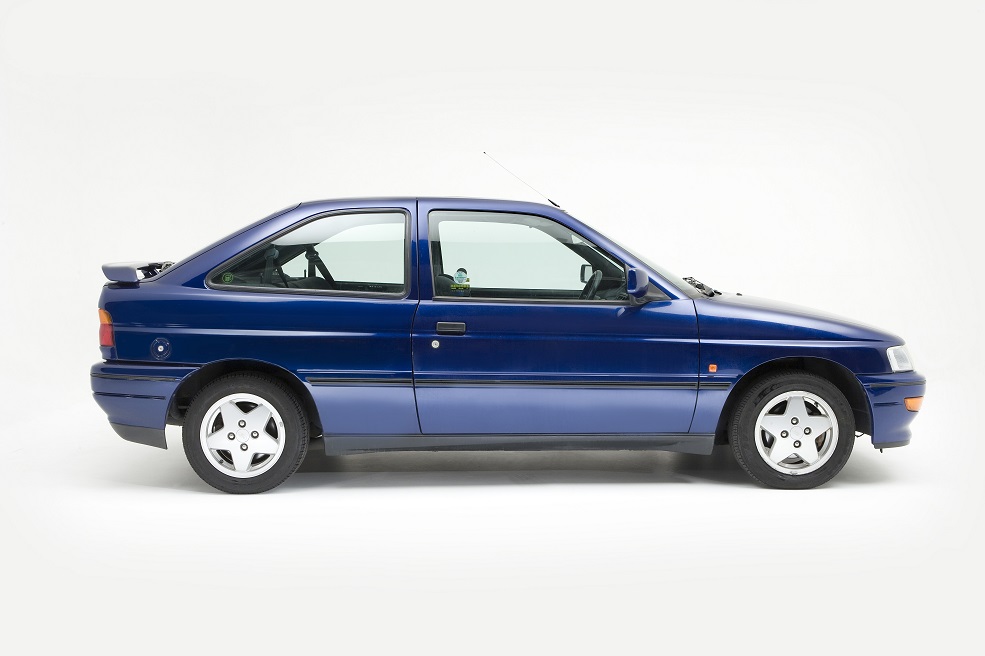
The first hot model arrived in late 1991, 14 months after the Ford Escort Mk5 launched, when Ford decided to go back to go forward and resurrect the hallowed RS2000 tag. This time it was front-wheel-drive, but still followed the successful formula of its iconic RWD predecessors, with a big engine, top-of-the-range equipment, Recaro seats and better running gear. ‘The Champ is Back’ exclaimed the advertising, and in many ways it was. The RS2000 was widely praised for offering a well-rounded, fun-to-drive package that, most importantly, offered plenty of go. As a hot hatch it was very good, but as a Mk5 Escort, it was excellent.
With the Zeta (later renamed Zetec) engine being developed for the Mondeo not yet ready, Ford opted to use the I4 1998cc DOHC motor fitted to the Scorpio and Sierra in eight-valve guise, but top it off with an all-new 16-valve cylinder head. Matched to the new MTX75 five-speed gearbox (a front-wheel-drive version of Ford’s existing MT75 transmission), it was criticised by some for being harsh and noisy at high revs, but still propelled the RS2000 from 0-60mph in just over eight seconds and onto a top speed of 131mph.
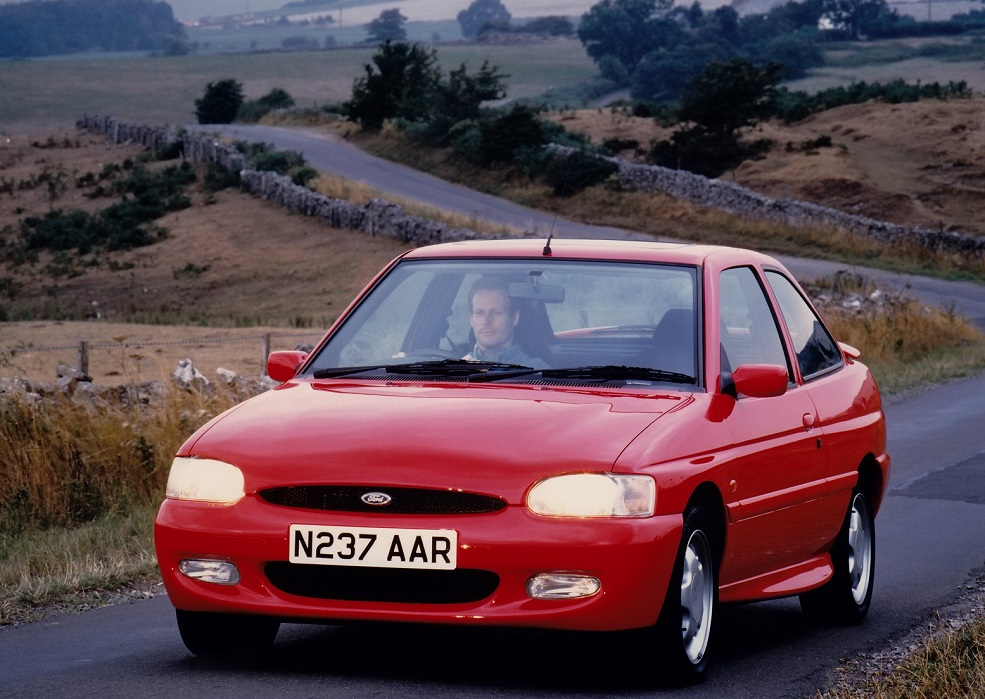
All-round disc brakes, variable-rate power steering and suspension fettled by Ford’s Special Vehicle Engineering department were tasked with taming the RS2000’s performance, and the exterior was enhanced to make it look beefier, but still subtle. You got twin bonnet peaks (one being necessary to clear the camshaft cover) a revised front end featuring wider headlamp lenses and rectangular foglights, a rear spoiler, sideskirts and polished 6×15-inch five-spoke alloy wheels.
It looked the part and drove well, but its discreet looks couldn’t halt spiraling insurance costs and a not insignificant £15,995 price tag meant initial sales were slow. The RS2000 wasn’t strictly the most powerful Mk5 of course – that honour goes to the RS Cosworth launched in spring 1992, but that was essentially a 4×4 Sierra clothed in Escort panels and added a further 25 per cent to the list price.

Ford would often offer big discounts, but even so, it needed a cheaper variant – and again it revisited its back catalogue of model names to fill the void. In early 1992, the new Zeta 16-valve engine had arrived, bringing improved driveability while also marking the return of the XR3i. Available in 3-door hatch and Cabriolet form, the XR3i could be specified with a 105bhp version of the new 1.8-litre engine, or a more powerful 130bhp one. The 130 lowered the 0-60mph time down from 9.8 seconds to 8.5 seconds, and raised the top speed from 118mph to 126mph. The 105 had drums on the rear and an uprated BC gearbox, while the 130 got the stronger MTX75 box and rear discs as per the RS2000.
Appearance wise, it resembled the RS2000, but was a little toned down. You didn’t get the bulged bonnet or the sideskirts, and the wheels were smaller, 14-inch items. Inside there were no Recaros either, but the substitute winged seats were decent enough. The Escort was still expensive compared to its rivals through, and even the XR3i still attracted high premiums.
The Mk5’s facelift of autumn 1992 (sometimes called the Mk5a) ushered in the aforementioned oval grille, a new bonnet and new rear end styling. You also got extra safety features including side-impact bars and an airbag, as well as new interior trim. A new 1.6-litre Zetec engine was also introduced, replacing the previous CVH and fuel injection was standardised on all petrol models. Sadly though, the RS2000 lost its distinctive bonnet bulges.
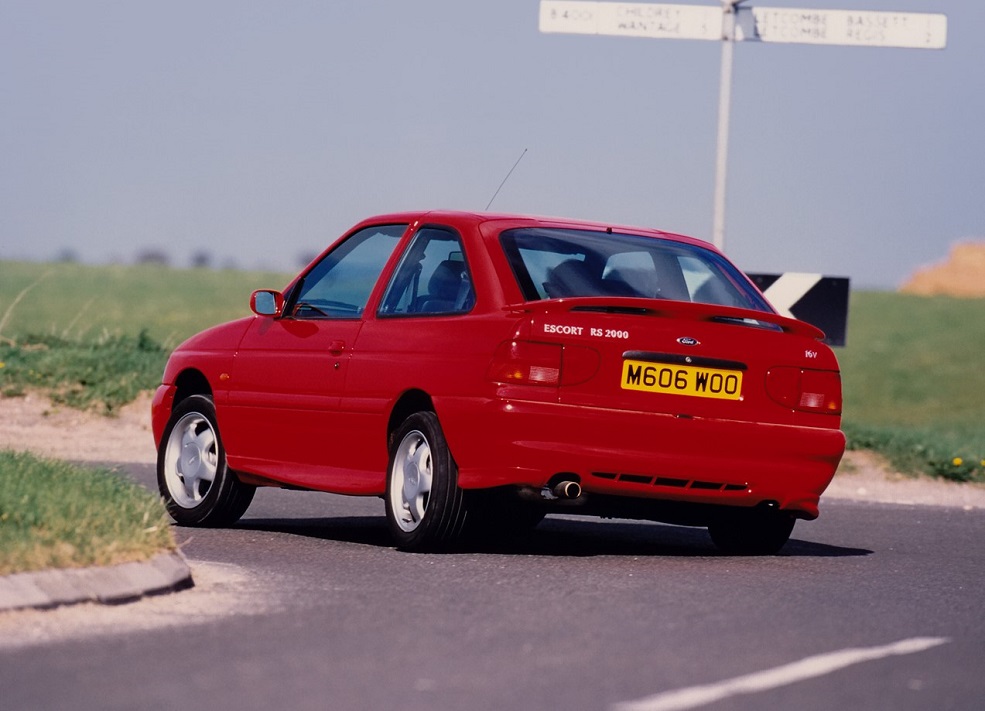
For the 1994 model year, a four-wheel-drive version of the RS2000 joined the range. This made for an excellent overall package with superb handling, but the extra weight served to blunt performance. It’s believed just over 400 complete cars were sold, and they are now very rare.
The XR3i met its end at the beginning of 1994, when it was replaced by the toned-down Si, no doubt in an effort to reduce insurance premiums. This was initially available in 105 and 130 guises, with a 89bhp 1.6 also an option, along with five doors. For 1995 though, another major facelift would occur. Commonly known as the Mk6, these cars ushered in smoother front-end styling and a new dashboard, as well as suspension revisions.
The RS2000 models survived into Mk6 guise, but not for long. It sold well enough, but not as well as hoped, and when production ceased in June 1996, the RS badge wouldn’t return again until the RS Focus arrived in 2002. The Si also survived as a Mk6. A few 130bhp 1.8-litre engine slipped into these restyled models, but generally they were powered by a 113bhp version, identifiable by a plastic rather than cast inlet.
The last model with any sporting pretensions was the GTi introduced in 1997. The only GTi-badged Ford to ever be sold in Europe, it used the lukewarm 113bhp 1.8-litre Zetec, but included the bodykit borrowed from the RS2000 model, part-leather seats, alloy wheels that mimicked those used on the Cosworth (but were smaller) and the standard fitment of ABS. It was available in three and five-door guises, as well as in rare estate form.
When the Focus was launched in 1998, The Escort range was cut down to just Flight and Finesse editions, sold for a few years in parallel with the Focus. All engines except the 1.6-litre petrol and 1.8-litre turbo diesel were dropped, and in 2001, that was that. Really though, the fun ended five years earlier, when the demise of the RS2000 signalled to the end a long and successful lineage of hot Escorts.
Bodywork
It’s a 1990s Ford, and 1990s Ford like to rot. Early cars are particularly susceptible, but they all need checking. The rear quarter design allows water to pool where the filler cap is, causing it to rot from the inside out; repairing this can be complex.
Rear chassis legs are prone to serious rust too, as is the battery tray. If the rots out, it can result in the fusebox getting wet, causing electrical problems. Other areas to check include the sills, floorpan, bulkhead, rear wheel arches and around the rear window.
Electrics
The Mk5 suffers from electrical issues caused by burnt out tracks, dry joints and the aforementioned water ingress in the fusebox, with erratic behaviour of the fuel gauge, heater blower and warning lights common symptoms. There are several different types, so it may be easier to have it repaired where possible.
Problems can occur also occur with the electronic distributorless ignition system (EDIS) module, produce idle hunting and misfiring, while inconsistent temperature readings point to the common issue of the sender failing. The coating on the wiring to the coil packs, injectors and sensors also tends to crack with age due to its positioning, sometimes causing the wiring to short out.
Damaged front sidelights can be difficult and expensive to replace, with genuine new items carrying a premium due to being shared with the Escort Cosworth.
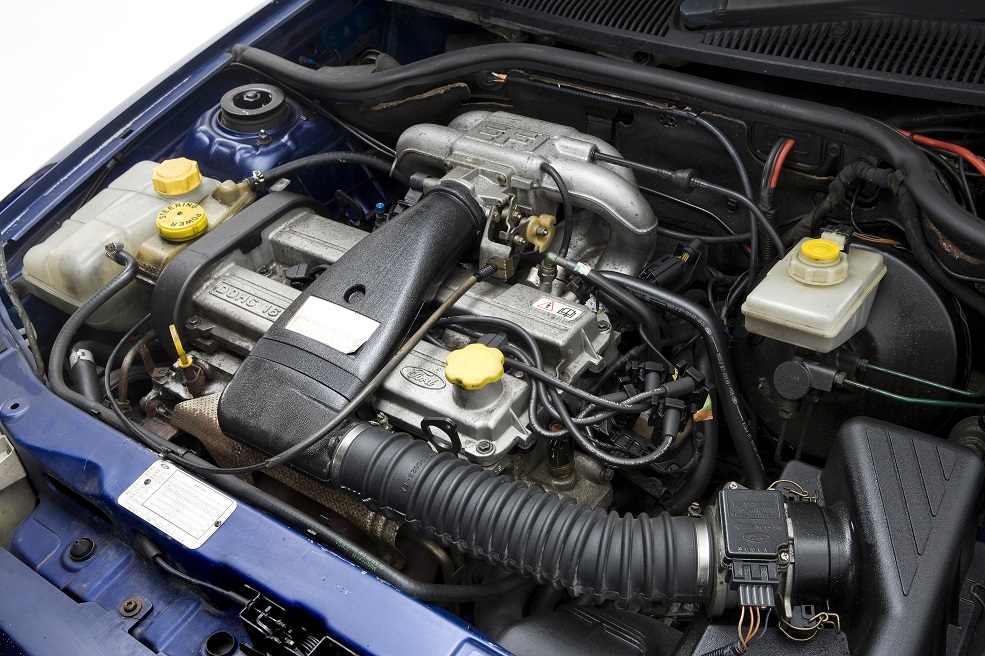
Engine
The I4’s timing chain is considered to be good for 100,000 miles, but if it’s noisy at idle or when revved it’s a sign that it’s stretched and worn. Noisy tappets can be a result of the oil pressure relief valve becoming loose over time and gradually reducing the engine’s oil pressure. Other issues include a rough tickover, usually a result of a gummed-up idle control valve, and the failure of Lambda sensors and catalytic converters, which lead to a reluctance to rev and poor fuel economy.
The I4 also has a tendency to leak oil between the block and the head at the front of the engine, and be aware that swapping out the alternator or water pump requires the engine to be moved.
The Zetec engine is reliable but can suffer from sticking valves. There have been reports of the plastic timing belt tensioner and idler pulleys become brittle with heat and shattering too, so make sure you replace the pulleys at the same time as the belt. The interval is 80,000 miles.
Transmission
The MTX75 is expensive to rebuild, so listen for terminally worn, rumbling bearings and check for leaks from the output seals. Synchromesh between second and third gear commonly fails but don’t be concerned by first or reverse gears being a little reluctant to engage as it’s a quirk of the box.
The transfer box and differentials of the 4×4 don’t give too much grief if power is kept standard, but if faulty can be hard to replace. There have been cases where the transfer box has totally failed, and the cars have been made into two-wheel-drive. Checks should be made to ensure the oil has been changed every 10,000 miles.
The BC gearbox fitted to 105bhp Zetecs had bigger bearings than the regular BC box, making it stronger. It was superseded by the IB5 in 1995, and though not as strong as the MTX75, parts are cheaper and easier to source.
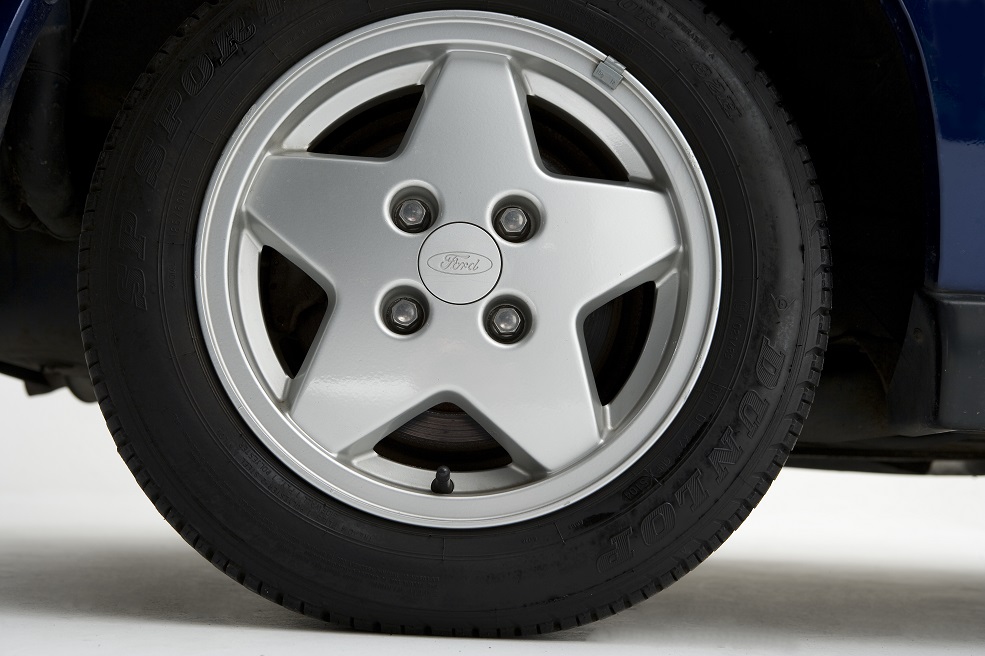
Suspension, steering and brakes
Vague steering and knocking from the front end can indicate worn track control arms. Imprecise handling can also be attributed to tired wishbone bushes or drop links. Noisy rear wheel bearings are a common failure point, and dampers last around 40,000 miles. The power steering pump can get noisy with age, but it rarely causes a problem.
Front discs are prone to warping, but more of an issue is the handbrake set-up. Although the RS2000 and XR3i 130s run discs on the back, the handbrake is operated via a pair of small shoes that sit inside the hub, which can cause issues. The obvious tell-tale that they’re failing are the handbrake having excessive travel and struggling to hold the car.
If there’s a squeaking from the back end, it’s likely that the load-apportioning valve’s return springs have rusted, although more of an issue is if the valve itself is actually seized, which can give rise to the rear brakes locking under heavy braking. Other models had drum brakes on the rear, including the GTi.
The 15-inch polished alloy wheels fitted to pre-1995 RS 2000 were prone to lacquer peel and subsequent corrosion – most will be painted plain silver by now. The Mk6 uses painted 15-inch five-spoke wheels also used on the Si, while the GTI has smaller versions of the Escort Cosworth design, also in 15-inch. The XR3i used smaller, 14-inch wheels.

Interior
The distinctive RS2000 Recaro front seats wear well, although the actual frame can fracture and deem the seat scrap, while the four-way adjuster can also become loose over time.
Water in the boot is common, the simple and easy-to-fix issue being that the sunroof’s drainage pipes have become dislodged from the flaps where they’re supposed to drain.
Ford Escort Mk5 & Mk6: our verdict
Having spent so long in the doldrums, the hotter versions of the Mk5 and Mk6 Escort have become increasingly rare and collectable, especially the RS2000, and to lesser extent, the XR3i.
In contrast to the rest of the range, it’s the earlier versions that are more desirable, but the rare 4×4 is also sought-after, should you be lucky enough to find one. The SI is less collectable, but the GTi is on the way, fuelled by its rarity – fewer than 200 are currently licenced.
Pick a good one, and you should have a rewarding and practical car on your hands. Some die-hard Blue Oval purists may never take to a Mk5 or Mk6, but being a hotter Ford, values are only likely to go one way.





